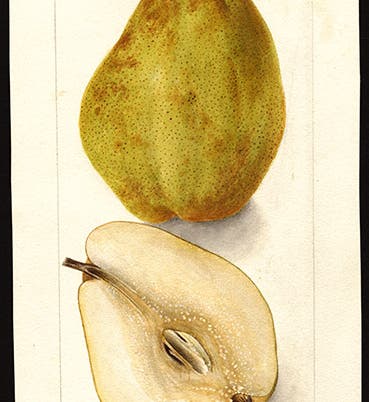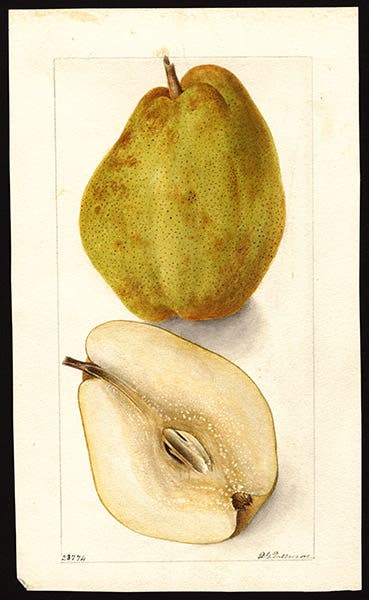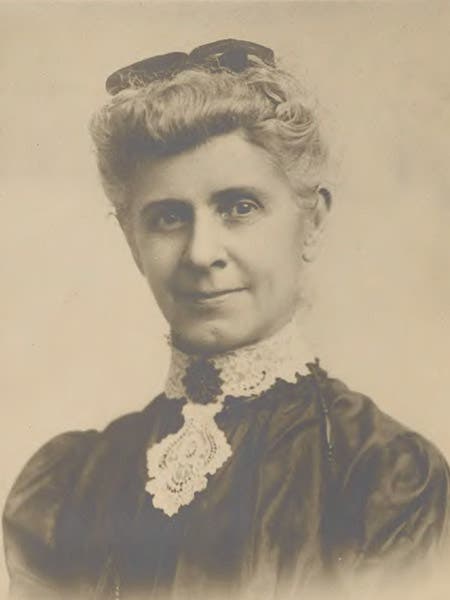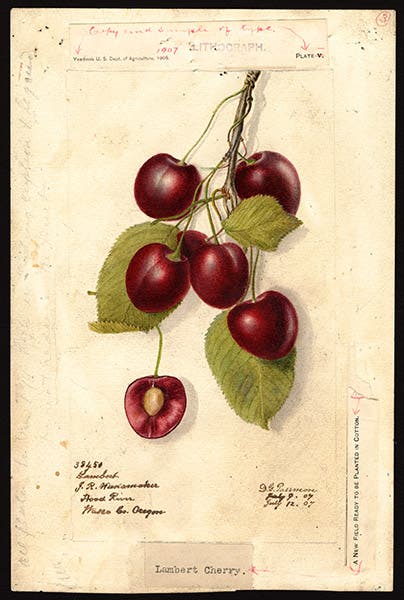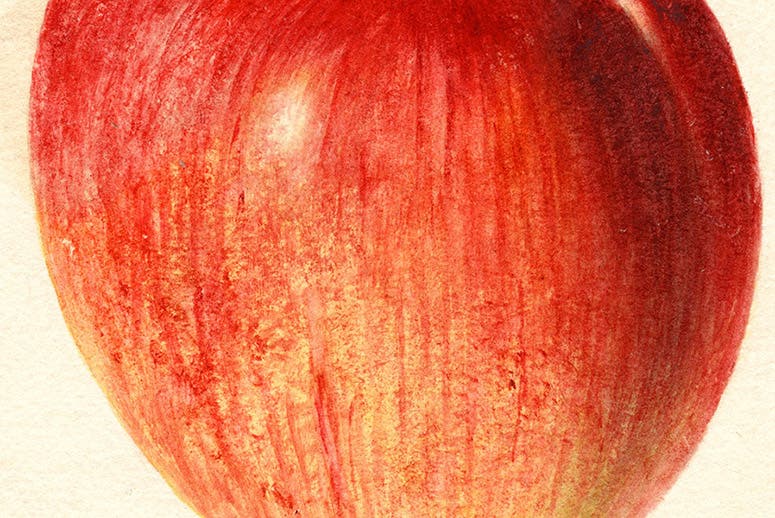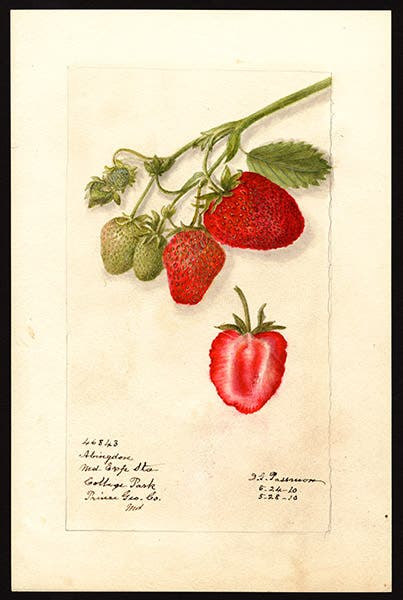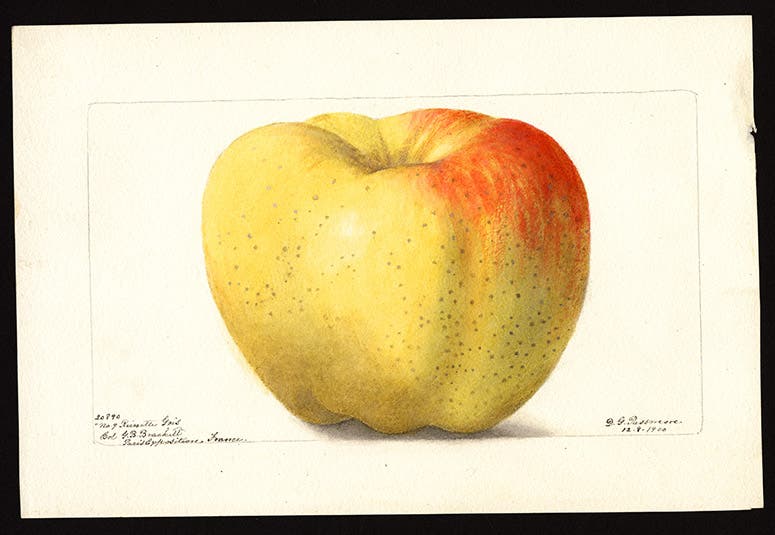Scientist of the Day - Deborah Passmore
Deborah Griscom Passmore, a watercolor artist and botanical illustrator, died Jan. 3, 1911, at the age of 70. Passmore trained as an artist in Philadelphia, took an artist's tour of Europe for a year(where she saw and was impressed by the botanical paintings of Marianne North at Kew Gardens), and then returned to the United States to practice her art.
After several years of trying to establish herself as an independent botanical artist, she took a job in 1892 with the U.S. Department of Agriculture (USDA). The USDA hired scores of artists at this time, mostly (but not entirely) women, whose job was to prepare a visual record of the thousands of varieties of fruit (and one presumes vegetables) that could be grown in American soil. Photography was now available as a record-keeper, but photographs could not yet record colors, and it was thought that the human eye and hand could do a better job anyway.
Passmore quickly rose to become head artist in the Pomology Division, and for 19 years she painted fruit at the USDA – more than 1500 watercolors, nearly all of which survive in the National Agricultural Library and are available online. One presumes that all the artists worked together – I cannot imagine the USDA giving them individual studios – and that must have been quite a sight, as well as an olfactory adventure, since the smell of ripe (and perhaps overripe) fruit would surely have permeated the air.
The easiest way to get a feel for the scope of Passmore's pomological art is to go to Wikimedia commons and search for "Deborah Passmore watercolor pomological", at which invitation, thumbnails of some 1500 watercolors will pop up for your perusal. If you prefer, you can do the same thing on the NAL website. I am not a watercolorist, and I confess I cannot see much difference between Passmore's artwork and that of some of the other staff artists, such as Amanda Newton. But even as a layman, I can tell that Passmore was a master of her craft. You will appreciate this best by zooming in on one of the images, which I have done with her painting of a Dixon apple (fourth image). I am sure that capturing the coloring and texture of an apple skin is very difficult, requiring dozens of layers of watercolor wash. Passmore clearly had patience as well as skill.
Although the purpose of Passmore's pomological paintings was archival, to preserve the appearance of varieties that might later disappear, her artwork was occasionally used, it has been said, to illustrate various USDA publications. Although we have a rather extensive collection of government documents, I have not attempted to ferret out any of these prints, although I probably should have tried to find at least one, so we could see what is lost from a watercolor when it is converted to a print. But it is hard to beat the original watercolors, especially when they have been preserved with modern high-resolution scans.
It was fun to browse through Passmore’s 1500 watercolors and choose five that appealed to me for no reason that I could pinpoint. We show here, in addition to the detail of the Dixon apple from West Virginia (fourth image), a Kieffer pear from Maryland (first image), some Lambert cherries from Oregon (third image), a few Abingdon strawberries from Maryland (fifth image), and one of the few large watercolors Passmore painted, a Reinette Gris apple, brought all the way from Paris.
The National Agricultural Library has an album of watercolors of flowering plants that Passmore painted before specializing in fruits. It is valuable not only for the artwork, but for including a photograph of Passmore taken in her later years, which we reproduce here (second image). You can leaf through the entire album at this link.
William B. Ashworth, Jr., Consultant for the History of Science, Linda Hall Library and Associate Professor emeritus, Department of History, University of Missouri-Kansas City. Comments or corrections are welcome; please direct to ashworthw@umkc.edu.

